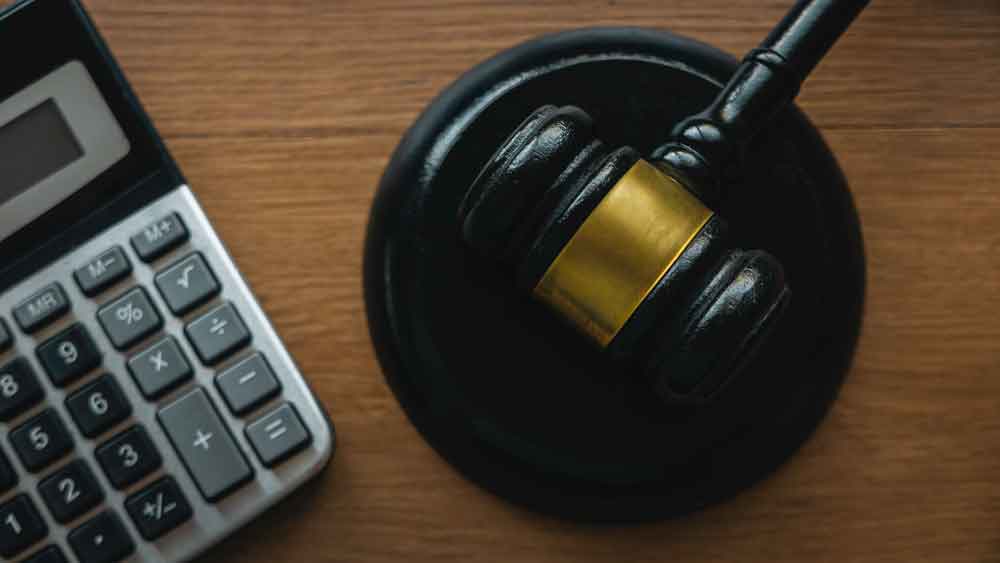Navigating the bail bond system can be a daunting task. It is often filled with legal complexities and financial obligations that are difficult to understand. However, by having a clear understanding of what is involved in the process, individuals can make informed decisions about their cases.
This comprehensive guide provides an overview of the bail bond system and outlines key points to consider when navigating it. From understanding how bonds work to learning about the different types of bonds available, readers will gain insight into this complex area of law so they can effectively manage their legal situation.
Understanding How Bail Bonds Work

When navigating the bail bond system, it is important to understand how bail bonds work. Bail bonds are a form of insurance that guarantees suspects will appear in court for their scheduled hearing.
When an individual is arrested and charged with a crime, they may be released from police custody if they post bail. To do so, the defendant must pay money or present collateral in exchange for freedom until their trial date arrives.
The amount of money required to obtain a bail bond depends on the severity of the alleged crime as well as any prior criminal history of the accused person. The process begins when a licensed bonding agent posts an amount equal to or greater than what was set by the judge at arraignment.
This payment allows defendants who cannot afford full cash bail amount to access release while awaiting trial. To secure this arrangement, most defendants need some type of collateral such as property deeds or jewelry which can be held by agents during the duration of proceedings until all obligations are met and paid off in full.
Once out on bail, there are certain restrictions imposed on individuals including travel limitations and drug testing requirements along with other stipulations depending upon jurisdiction laws where the case is being heard initially set forth by the judge presiding over proceedings which must be complied with in its entirety failure resulting in cancellation of bond placed by the agency and possible forfeiture.
Therefore, without reimbursement meaning payment made toward securing the defendant’s freedom is completely lost even though the obligation has been fulfilled successfully meeting terms outlined originally before release granted conditionally pending the outcome final judgment passed after the trial phase concluded accordingly regardless of the verdict rendered ultimately thereby bringing closure matter legal nature involving parties involved heretofore described here with conclusively marking conclusion narrative related thereto concerning understanding how bail bonds operate functioning whole conceptually speaking anyway.
Types of Bail Bonds Available

When navigating the bail bond system, it is important to know what types of bail bonds are available. The most common type of bond is a cash bond, which involves paying an entire amount of money upfront. This type of bond does not require any additional collateral from the defendant or anyone else involved in the case.
Another popular option is a surety bond, wherein an insurance company agrees to pay all or part of the total amount if the defendant fails to appear for court proceedings. In addition to these two options, defendants may also be able to secure their release with a property bond where real estate owned by someone other than the accused can be used as collateral for their release.
Finally, certain courts allow defendants who have been charged with non-violent crimes and are considered low-risk individuals to post Release on Recognizance (ROR) bonds without having to put up any money at all. Knowing your options when dealing with different types of bail bonds can help you make informed decisions about how best to handle your situation to navigate through this complex system successfully.
What If You Cannot Afford the Full Amount?

When it comes to navigating the bail bond system, cost can be a big factor. If you or your loved one cannot afford the full amount of bail, there are options available. Depending on jurisdiction and availability, some people may qualify for reduced fees or payment plans that allow them to pay off the debt over time.
Additionally, certain organizations offer grants and financial aid programs that help cover costs associated with securing release from jail through a bail bond system. With these resources in place, those who are unable to pay the full amount of their bond may still be able to secure freedom without putting themselves at risk of further hardship due to an inability to pay.
Conclusion

The bail bond system can be a daunting process to navigate, but with the help of Hillsborough County Bail Bonds and other professionals in the bail bond industry, it is possible to understand exactly how these systems work. By understanding the complex legal processes involved, you can make sure that your rights are protected while still ensuring justice is served.
With this comprehensive guide, you now have all of the information you need to better understand and successfully negotiate within the bail bond system.
